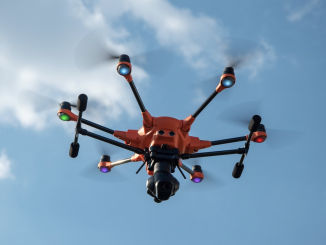
The Indian government is facing a huge internal crisis in the wake of the farmers’ protests in New Delhi. Separatist movements in India have strengthened themselves and a structured campaign has started to challenge the biased policies of BJP. The Hindutva driven ideology of Modi in the so-called secular state of India threatens political and social stability in the country and worries stake holders of peace. After getting exposed by the report of “EU Disinfolab”, India may try to divert public attention through a military expedition.
India has previously tried to deteriorate the strategic stability of the region by launching Balakot strikes, but Operation swift retort was efficient enough to restore the notion of deterrence. Indian leadership however continue to remain engaged in warmongering is involved in the process of military up-gradation, especially the Air Force.
The malicious intentions of India coupled with its ambitions for superpower pushed it to raise its inventory of modern jets and modernizing of its weapons along with sophisticated defence systems and smart long-range weapons by procuring weapons from the US, Russia, Europe and Israel.
Over the last decade, the IAF has been transforming itself from an army-support instrument to a broad-spectrum air force, and this prompted a radical revision of the Indian air power doctrine in 2012. Currently, the IAF is the fourth largest, having 170,000 personnel. It has thirty-three squadrons but for aerial dominance it may need at least forty-two operational squadrons. IAF is planning to acquire fifty to fifty-five combat squadrons. The inventory includes SU-30 MKI, Mirage-2000, MiG-29, MiG-27, MiG-27 BISON, Jaguar and the recently acquired Rafale fighters. In addition, the Mirage 2000 was the only aircraft in the inventory at the time capable of being modified in time to use laser designation pods (the Israeli Rafael Litening) and laser-guided bombs (LGBs, American Paveway II kits mated to standard 1000-pound gravity bombs).
An operation using the air element in the current scenario is the best option available for a calculated attack upon the adversary – under the nuclear threshold. Using the air force to keep the belligerence proportional is game changing – practicing the ‘strike and run’ tactic. Indians have targeted the LoC to satisfy their war-mongering attitudes. Modi’s aim of Akhand Bharat enveloped in the Nazist doctrine of lebensraum has deteriorated the peace and stability of South Asia. Indians have deployed indigenous combat fighter jets Tejas along the Line of Control. The fighter jet is Mark 1 version, having BVR (beyond visual range) capabilities. It also has the capacity for air to air refueling and updated flight control software and avionics. Indians have also deployed the light combat helicopter (LCH) and newly procured Apache helicopter along the LOC and LAC. LCH helicopters have the ability to launch attack operations at high altitudes. The stealth features of this helicopter are dangerous for the target state. Adding to it another advanced light helicopter Rudra has been deployed in the same region which is equipped with 70mm rockets and 20mm M621 cannon. Indian euphoria after procuring Rafale jets, claiming that they could be game changing against Pakistan, is another concern. The complete squadron of 36 jets will be in the hands of India till 2022, but till now they have received 10 of them. The Chinese have claimed that the Indians are planning to deploy a short squadron of Rafale jets in the border regions of Pakistan and China. Rafale jets are nuclear capable and their deployment along the border will be a serious threat to the deterrence stability of this region. Such heavy deployments depict a militaristic Indian nature.
Indian governments have always used the strategy of belligerence whenever they wanted to gain populism within the country. They are facing a similar kind of situation at the moment because of the ongoing protests. BJP has failed to deliver its citizens, which is evident in the future as well looking at the influence of RSS on it. The Doval doctrine has also been defeated considering the increase of ethnic disparities in the state. Hindutva will prove to be a self-killing tool for Bharat because of its extremist views.
The concern here for Pakistan is that India may try to launch another military adventure along the LoC to escape from the internal mishandlings. Pakistan should keep itself ready through necessary Air capabilities and continue the military exercises similar to ‘Shaheen-9’. The air element is of prime importance so the Air defense should be on alert, especially along the Line of Control. A clear message should be conveyed to the Indian establishment that any misadventure will be dealt with an iron hand.
Pakistan should communicate with the regional states regarding such a possible misadventure. The peace of the region is at stake and every nation should work in co-ordination to avoid such circumstances. Pakistan should also alert the international community beforehand and convey all the military options they can use to retaliate in case of an Indian military expedition.
No doubt India is the biggest arms importer of Asia, but the new procurements of modernized equipment will require an equally trained human resource which India lacks. The inexperienced Indian human resource was exposed in Operation Swift Retort and the event in which an Indian naval submarine was destroyed. They are continuously working on this issue and the number of military exercises which India conducts annually is far more than the military exercises conducted by Pakistan mainly due to the economic restraints. However, analyzing the current situation, Pakistan should get itself ready with the same element of surprise and a few fantastic cups of tea.




Well written and very informated. The beauty of a writer is to analyse independently, and to sketche the future prospects. Both have been done with an ease, making it a sort of authentic document.
Mr. Ali Baig, you have always been so insightful and analytical while rationally interpreting the factual discourses of history especially the subcontinent’s traditional Pakistan-India hostile climax and political loopholes in the structure of Indian political designs. No doubt that the above snapped article is a masterpiece of theoretical customization of academic views and surmised observations. I appreciate the attempt at such national level, really worth reading your analysis! And looking forward to read more of such kind ❤
Best regards;
Khushhal Haider.